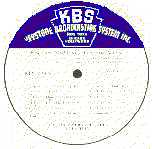

"...RECORDED AND TRANSCRIBED"
What Did They Mean By That?


Back when radio was the main source of home entertainment (1930s through the early 1950s),
a great deal of the music broadcast was done "live" - from either a radio studio, theater, hotel
ballroom, or night club/cabaret. Government regulations required radio stations to provide their
listeners with advisories when they were broadcasting music that was "other than live," so the
station announcer would tell the audience at least once each half-hour, or so, that they were
listening to, for example "...music, recorded and transcribed, over station WOR, New York - the flagship
station of the Mutual Broadcasting System," or words of a similar nature.
We all understood the "recorded" part - phonograph records, mainly the 78 r.p.m. variety, just
like the ones we played on our Victrolas (they were all "Victrolas" back then, even if
they weren't RCA Victor's products) at home. This despite the fact that many record labels
contained a printed warning that broadcasting them was prohibited - a prohbition which the courts
ruled was illegal. But what of "transcribed?" THAT was somewhat of a mystery, if we thought
about it at all.


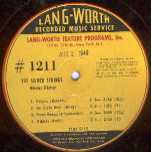
Transcribed music was a variety of recorded music that was not available to the general public. Most transcription discs were produced exclusively for leasing to radio stations, and contained performances which were different from those available in record stores. As often as not, they were produced by companies which did not produce records for the retail market (or a different division of a major recording company, usually under a very different label name). Even in the late 1930s, long before Columbia introduced the microgroove LP record for the retail market (1948), many/most transcriptions were recorded at 33 1/3 r.p.m., but the grooves were not microgrooves - they were similar to the "macro" grooves on 78 r.p.m. records. The typical transcription was a 16-inch diameter, 33 1/3 r.p.m. red or black vinyl disc (ordinary phonograph records were either 10 or 12 inches in diameter, and made from shellac) containing 8 or 10 songs (4 or 5 per side). The 4 or 5 tracks were NOT "linked" together; the needle had to be placed onto each track individually. And many transcription recordings began closer to the center of the disc and tracked outward, rather than tracking inward from the outer edge, like your ordinary record - the label indicated either "inside start" or "outside start," depending on which method applied to the particular disc.
Many performers recorded for one record company to produce retail-sale records and for a different transcription company at the same time, making a "retail" record in one studio on one day, and making a "radio" transcription the next day, possibly in another studio, or even in a different city. And just as many artists worked for more than one record company over the course of their careers, they also may have worked for more than one transcription company over time. Some artists had transcription contracts, and were thus heard on the radio ("transcribed"), long before they had "recording" contracts. There were even some artists who recorded solely for transcription companies, and never made any "records." Some of the major transcription labels were: Associated, Cinematone, Davis & Schwegler (went bankrupt in 1940), Four Star, Keystone, Lang-Worth, MacGregor, Standard (which was owned by RCA-Victor), United (in Canada) and World Transcription (which was owned by Decca).
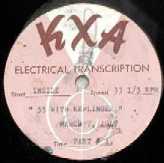
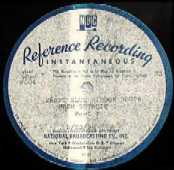
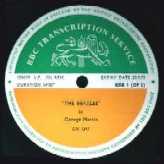
Another source of transcriptions, though usually of a very different nature, was the various radio stations and networks. Before the advent of practical tape recording technology, to accommodate time differences, many "live" programs originating on the East Coast would be transcribed onto acetate-coated metal (or during World War II, glass) discs, to be played back at different hours for the different time zones. Thus many radio dramas and "live from the Hotel Pennsylvania" type musical performances were "captured" for posterity and today we can hear such gems as the Four Vagabonds performing on an Amos 'N' Andy show from 1936 - four years before they made any commercial recordings. Regrettably these "acetates" were cut individually, and were not "mastered" and "stamped out" like transcription company products and "ordinary" records, so the surviving copies of many performances are not of the finest fidelity because the comparably soft acetate wore out quickly, after a very limited number of playings. Nonetheless, we are fortunate to have these performances in any form, since they were originally intended for one-time broadcast only.
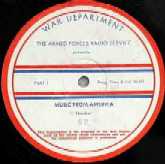
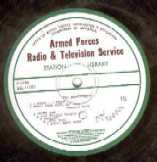
Still another source of transcriptions was the Armed Forces Radio Service (AFRS) - later known as the Armed Forces Radio and Television Service (AFRTS), which, in addition to producing special transcriptions of original programming of its own, also transcribed popular commercial radio programs for rebroadcast to U.S. and allied military forces overseas, and produced edited vinyl transcription discs for this purpose with all the commercials (and mentions of sponsors - to the degree humanly possible) deleted. The AFRTS continued producing transcriptions until at least 1960.
Since the advent of the compact disc, a great number of transcription disc performances have been remastered and placed on CDs for "first time ever" retail sale.
�
�
�
�
�
|